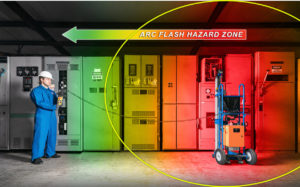If you work in the electrical industry, safety is always a priority, but Electrical Safety Month is a great time to focus on best practices to keep your people safe. Managers and equipment owners in particular should know how to create a comprehensive safety plan for their facilities.
Following the safety regulations, maintenance guidelines, and National Electric Code laid out by The National Fire Protection Association (NFPA) is critical for electrical safety. The NFPA 70E standard for electrical safety in the workplace, which was updated in 2024, provides requirements and guidance for reducing exposure to electrical hazards. Employers are responsible for establishing, documenting, and implementing safety procedures and training employees.
Standards emphasize the importance of inspecting and maintaining equipment and taking equipment condition into account when assessing risk. Using the right equipment, whether that be remote switching and remote racking solutions to put distance between your personnel and arc flash hazards or tools, suits, and gloves rated for the equipment you’re working on, can make all the difference when an incident occurs.
Keeping up with regulations is the best way to maintain a safe work environment. The latest version of NFPA 70E introduced changes for PPE, testing, and lockout/tagout procedures; recent updates to NFPA 70B mandated maintenance procedures; and IEEE 1584 provided updates for arc flash energy calculations. All these updates will impact your safety planning.
Watch the webinar below where Denise Green, Midwest regional sales manager and national breaker specialist for Group CBS, joined CBS ArcSafe to share her insights on requirements and best practices for electrical safety.
If you have any questions on electrical safety, or would like to discuss your requirements, contact us here.

